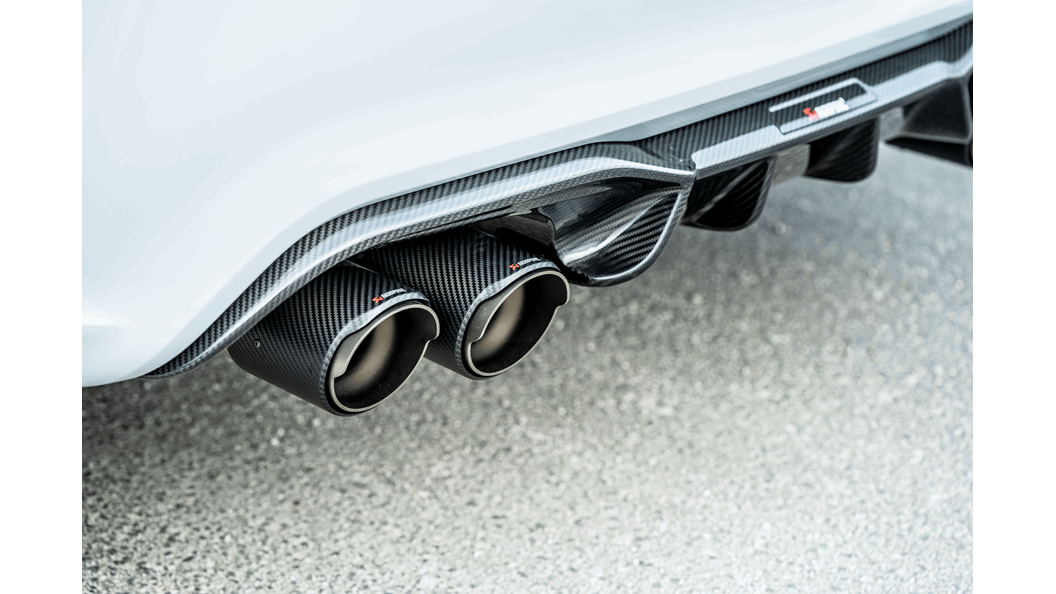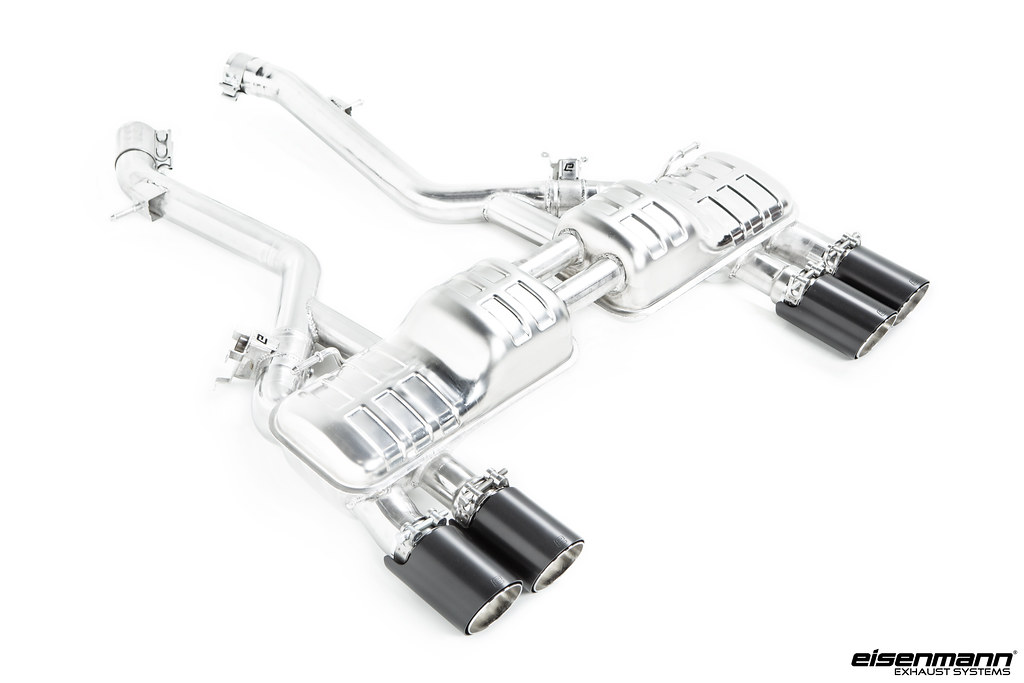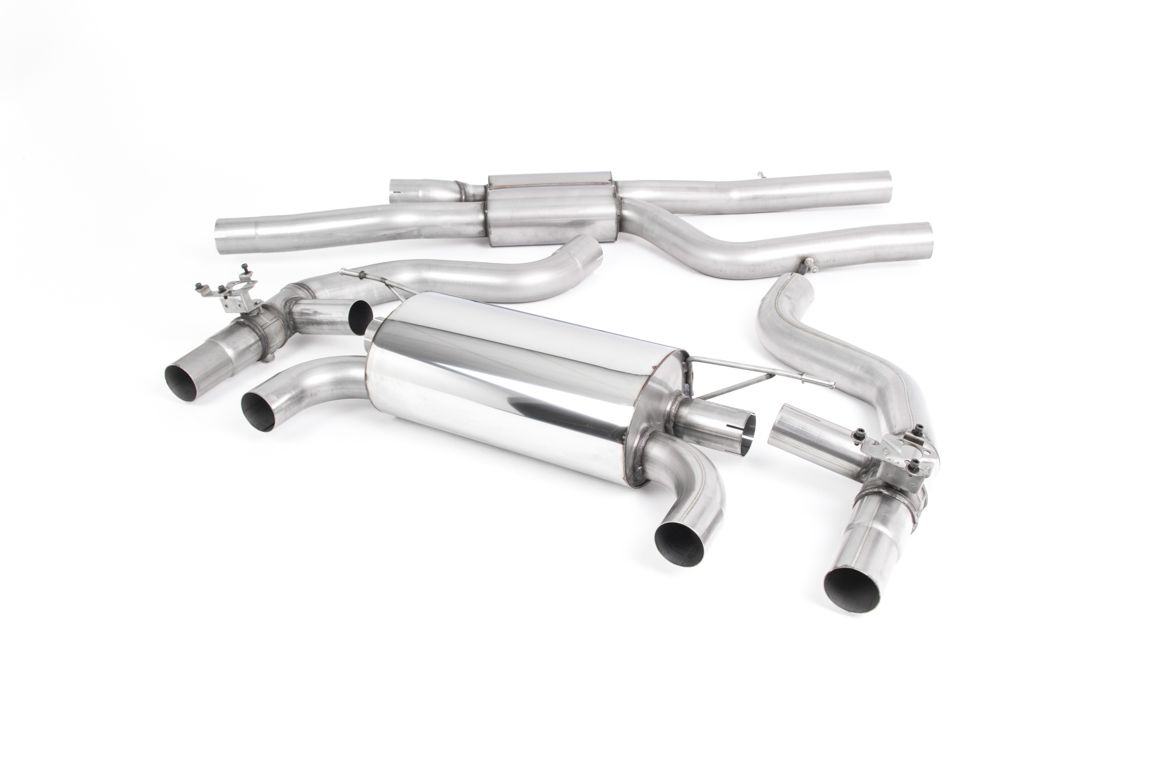The time has come for me to finally explain the world of OPFs/GPFs (Otto-Particle Filter or Gas Particle Filter, two names for the same thing), exhausts, downpipes, tuning files, OPF/GPF sensors and the measures required to make all work for us here. Over the past months I have lost count on the sheer amount of people that have reached out to me or shared their questions in forums, Facebook groups or in Instagram DMs.
The list has been long and growing ever since, especially because many of those people don’t immediately know what the impact is when they want to replace their exhaust here in Europe, in Chili and in the future also in China. The chances are more countries will follow and use OPF filters to regulate emissions and to get cars homologated in markets where stronger emissions regulations are being put in place.
You could argue that this text is not for you, but my answer to this is “not for you yet”. The world is changing. Emissions and exterior sound regulations are around the corner and the automotive world will have to change accordingly. The current process and the world ahead of us will be one that forces us to undergo many difficult emotional challenges one of which is dealing with less exhaust sound and quieter cars. It is going that direction and some countries might behind on this, but eventually it will touch your market as well.
How does an exhaust system look like?
Let’s go back to the technical side of this story. Let’s look at an exhaust system. The stock system shown below is for the BMW M2 Competition, but we have seen similar set ups on other BMWs, MINIs and even other manufacturers. Although, other car makers are using different set ups and have active and passive OPFs, but also cars without any extra filters. There is no real line to distinguish among these developments other than that cars are getting more quiet.

Yellow circle = OPFs/GPFs
Red circle = Center damper
Blue circle = Rear muffler
On the photo shown here you will see the stock M2C exhaust system. It is key to understand that when we look at an exhaust system upgrade, we always look from the rear to the front. That is the easiest way to do it when you are not familiar with aftermarket exhaust upgrades. The first part you will notice are the end pipes followed by the rear muffler, back box or end damper. Whatever you call it, it is the same thing. The rear muffler includes the two stock valves which are controlled by the car’s stock ECU, or on-board computer.

After the rear muffler you will see the center damper followed by two separate metal boxes, which are the OPF’s. If you want to read more about what an OPF is, than please refer to list with links at the end of this text. After the OPFs, the exhaust pipes make a bend and go to the downpipes. Inside both downpipes, there are catalytic converters (cats). Each catalytic converter has a sensor to monitor the operation of the cats, but just before the cats BMW placed a new pressure sensor that monitors the OPFs/GPFs in case their clog up or malfunction.
For a better overview look
here!
How does replacing an exhaust system work?
Step 1 – Rear muffler replacement
Now that we know the technical set up of the exhaust line, let’s start replacing parts. First of all, let’s replace the rear muffler for a new system often called an axle back system or slip-on system. The replacement can be done quite easily. The pipes of the original exhaust are cut just before the pipes split in a Y shape and run to the rear muffler. The old system is removed and the valve controllers are placed on the new axle back system, which offers you the option to have a louder soundtrack. There are homologated systems and non-homologated axle-back systems available. The choice is up to you what you want. A full overview with systems is available via the list with links below.

Additionally, the new axle back system allows you to have remote valve control. Certain brands have this option via a Bluetooth remote or via an app on your smartphone. Often you have to order this option additionally and it doesn’t come included.
Step 2 – Center damper and OPF delete
The next step in replacing your exhaust set up offers a lot of options. There are brands that offer you the option to remove both the rear muffler and the center damper. These systems are called OPF/GPF-back systems. Milltek as a brand is known for these kind of systems. This set up leaves both OPF/GPF filters in place, which will save you a lot of hassle. We will dive into this in a minute.
The set up Milltek offers is not common, since the majority of the aftermarket manufacturers offer a replacement link pipe that connects the axle-back system to the downpipes. This linkpipe replaces both the center damper and the OPFs/GPFs. All three metal parts are removed, which has a major impact on the car and its capabilities to run without error messages. The reason is the OPF pressure sensor which is positioned on the downpipes and after the cats.

By removing the OPF/GPFs from the car, the sensors detects that the flow through the exhaust is quicker. The pressure alters and the sensor will throw an error message anywhere above 5000 rpm. This means that you cannot fully use your car with your brand new exhaust system without disabling this sensor. The disabling can only be done using an ECU tuning file and via a new tool that will be available on the market before the end of the year. More about this tool here:
https://f87.bimmerpost.com/forums/sh...9&postcount=32
IMPORTANT NOTE
Non-homologated axle-back systems are known for creating error messages and engine warning lights when the car is pushed beyond 5000 rpm. The error messages appear because the newly fitted rear muffler provides a better flow and therefore triggers the OPF sensor. This is even when the OPFs/GPFs are still installed on the car!!! Please be aware of this when you choose an aftermarket rear muffler. Non-homologated race variants of axle-back systems do cause issues and you need to be aware that you can have engine warnings popping up even if you have the OPFs/GPFs still installed on your car! You would definitely not be the first one with this issue.
Step 3 – Changing downpipes
The replacement of the stock downpipes on the vehicle can be done similarly to previous models and cars. The impact of the OPFs/GPFs is small other than that the pressure sensor hoses of the OPF sensor, which are connected to the downpipes need to be tied up properly.
The only key point to make is that nobody should replace their downpipes with new downpipes (either sport downpipes or de-cat downpipes) when the OPFs/GPFs are still in place on the car. The combination of OPFs/GPFs and aftermarket sport or de-cat downpipes is not advisory due to severe problems which can be caused under normal operation. The OPFs/GPFs can't handle the pressures that are caused by the improved flow through aftermarket downpipes. We have already seen engines being blown up by increased boost pressures and changed hardware ahead of the OPFs/GPFs and the exhaust flow.
 Step 4 – ECU/DME tuning
Step 4 – ECU/DME tuning
The most controversial topic of exhaust replacement is tuning. Hardly anyone wants to tune their car when they want to replace their exhaust, still when OPFs/GPFs are removed tuning of the ECU is still required. No other solution is in the market available right now, but a new product will land soon that offers clients the option not to tune their the car anymore. Let me explain why tuning is needed.
The key to the OPFs/GPFs removal is the fact that you need to disable the OPF/GPF pressure sensor. If you don’t do this then the car will provide you with error messages throughout the usage and when you go over 5000 rpm within the rev range. Limp mode has also been showcased with the ECU protecting the engine because it thinks something severe has happened.
To disable the sensor, you need to tune your car. The new ECU/DME tuning file will disable the feature and sensor in the car allowing you to drive without OPFs/GPFs. The tuning can be done via ODB or directly on the ECU which is positioned inside the engine bay underneath the windscreen and above the gearbox. Specialist can assist you locally in making sure the sensor is disabled. Of course you can get a tune installed that offers no performance gains and only the disabling of the sensor. This is fully dependable on the customer’s choice.
Many people are not in favor of tuning their car when they want to replace their exhaust. This is a logical point to make. Especially since many believe their warranty will void when they tune their vehicle. Totally logical, and therefore I started a development program with a partner earlier in the year to find a solution that will enter the market before the end of the year. More about this option right here:
https://f87.bimmerpost.com/forums/sh...9&postcount=32
Step 5 – Current constraints and differences between cars
Over the past months, we have received information from tuners and clients that the ODB tuning opportunity has been locked. ODB libraries have been changed and tuning via the ODB port inside the cabin of the car is not possible anymore since a particular software version. Latest information suggests the following with regards to the M2 Competition:
- Version: F020-18-07-547 = August 2018 - DME Confirmed Unlocked
- Version: F020-18-11-531 = Fall 2018
- Version: F020-18-11-551 = February 2019
- Version: F020-19-03-546 = June 2019 - DME Confirmed Locked
Be aware that if you have an older car produced in 2018 or in early 2019, and you haven’t done the DME recall that was issued earlier this year, you will have an unlocked ODB port in your car allowing for ODB tuning. If you have a newer car and/or the DME recall was done on your car, then your ODB is locked and tuning can only be done directly on the ECU pins. This means that your tuning specialist will have to remove some parts inside the engine bay to access the ECU. This takes more time and is therefore more expensive, difficult and time consuming than tuning via the ODB port in the interior.
 Final point to make…
Final point to make…
Many people have asked me what to do when it comes to the sound level of the car and removing the OPFs. To give you a ballpark idea of the sound production, I have written down the same steps below as I mentioned above for the technical part.
Stock
The stock exhaust unit can hardly be heard inside the car. You might hear it outside, but inside you really have to work your ears to pick up some burbles or extra noises. People therefore ask for a replacement within the European market where the OPF/GPF is used.
Step 1 – Rear muffler replacement
Replacing the rear muffler is the sweet spot when it comes to the M2C. You will remove the ugly stock rear muffler from the car and you will be able to fit a system that sounds and looks a lot better. Inside the car you will now hear the exhaust, and if you also disable the fake interior sound from the speakers (commonly known as ASD – Active Sound Design) then you will be able to enjoy the exhaust sound without it being too obtrusive inside the cabin.
Step 2 – Center damper and OPF delete
The next step is fitting a linkpipe which removes the OPFs/GPFs. This change is the biggest change you can have on the whole car when it comes to sound. The impact is massive and the change offers a wonderful soundtrack that we are used to when it comes to six-in-line powered cars. The OPFs/GPFs are the most restrictive part inside the exhaust. Remove and you unlock its best potential. If you have the budget, are willing to take the step and can live with the fact that you have a louder soundtrack than this is your choice. Of course, it means a much higher price tag and currently still the need to tune the car to deal with the OPF sensor issue.
Step 3 – Changing downpipes
The final step is changing downpipes. Never change them initially, always change them as the final step in your process! This is an important point I want to mention again. Replacing the stock downpipes for aftermarket sport downpipes or de-cat downpipes offers a serious gain in sound track and performance capabilities. Only people who can deal with the immensely loud sound track will opt for this. In the case of the BMW M2 Competition the car really screams and offers a sound track not many find “appropriate”.
Conclusion
I hope that with this piece of text I have been able to help people make their decision for the right kind of exhaust system. I am aware that many of you have questions and I hope I have answered them fully right here. If there are any questions, than please let me know and I will either update my story or answer them separately. I think many members here are also willing to help on this matter.
Additionally, I want to state that there are more options to alter your exhaust. You can replace the OPFs/GPFs with a secondary cats used on the M3 and M4 cars produced before August 2018. We have seen this before and you can look into it. All in all, the options mentioned above provide the answers for more than 90% of the people looking for a new exhaust.
List with links:
What is a OPF/GPF?:
https://drivetribe.com/p/the-opf-pan...RwGMywX_fgPPlw
Different exhaust options:
https://f87.bimmerpost.com/forums/sh....php?t=1585328
Emulator Control Unit:
https://www.manhart-performance.de/s...-control-unit/
I also made a video for everyone here to explain in more detail what is required to switch to an aftermarket exhaust system: